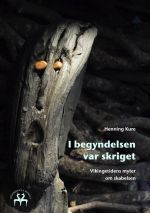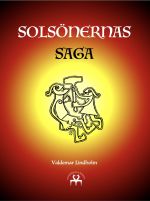Forskjell mellom versjoner av «Main Page»
Hopp til navigering
Hopp til søk
| (52 mellomliggende revisjoner av 4 brukere er ikke vist) | |||
| Linje 16: | Linje 16: | ||
<center><font face="Optima"> | <center><font face="Optima"> | ||
| − | '''<big><FONT COLOR=darkblue>HEIMSKRINGLA''' is the largest collection of Old Norse and Nordic source texts on the internet – currently some | + | '''<big><FONT COLOR=darkblue>HEIMSKRINGLA''' is the largest collection of Old Norse and Nordic source texts on the internet – currently some 7500 titles.</FONT COLOR=darkblue></big> |
'''<big><FONT COLOR=darkblue>HEIMSKRINGLA''' primarily consists of eddic texts, sagas, and scaldic poetry, secondarily of background material and sources related to Sami culture.</FONT COLOR=darkblue></big> | '''<big><FONT COLOR=darkblue>HEIMSKRINGLA''' primarily consists of eddic texts, sagas, and scaldic poetry, secondarily of background material and sources related to Sami culture.</FONT COLOR=darkblue></big> | ||
| Linje 28: | Linje 28: | ||
<div class="toccolours" style="background-color:#5985c3;color:#fff;font-size:14px;font-weight:bold;">'''<big>'''SHOP'''</big>'''</div> | <div class="toccolours" style="background-color:#5985c3;color:#fff;font-size:14px;font-weight:bold;">'''<big>'''SHOP'''</big>'''</div> | ||
| + | |||
| + | [[Fil:Helgensagaer (JL).jpeg|150px|left|link=Heimskringla Reprint]] | ||
[[Fil:Snorre Sturlason og Sturlungerne cover.png|left|150px|link=Heimskringla Reprint]] | [[Fil:Snorre Sturlason og Sturlungerne cover.png|left|150px|link=Heimskringla Reprint]] | ||
| Linje 40: | Linje 42: | ||
[[Fil:Islandske bispesagaer.jpg|150px|link=https://www.amazon.com/-/de/dp/8230357765/ref=tmm_pap_swatch_0?_encoding=UTF8&qid=1695029504&sr=8-3]] | [[Fil:Islandske bispesagaer.jpg|150px|link=https://www.amazon.com/-/de/dp/8230357765/ref=tmm_pap_swatch_0?_encoding=UTF8&qid=1695029504&sr=8-3]] | ||
| − | |||
| − | |||
|- | |- | ||
| Linje 50: | Linje 50: | ||
| − | [[Fil: | + | [[Fil:Stöng indgang.jpg|left|200px]] |
| − | ::::::::::<big><big><FONT COLOR=darkblue>'''[[ | + | ::::::::::<big><big><FONT COLOR=darkblue>'''[[Stednavne og førkristne kultsteder (clm)|Stednavne og førkristne kultsteder]]'''</big></big><br> by ''Carsten Lyngdrup Madsen'', 2018.<br> |
| − | :::::::::: | + | ::::::::::When the god Thor had once been grossly humiliated among the giants and his hammer had proved ineffective, he stood deeply shaken and confused outside their gate, ready to return home. Then the giant Utgard-Loki approached him, first to rub salt in the wound by asking how Thor himself felt the visit had gone, and then to tell him that it had all been one great illusion. And if he doubted this, he and his companions on the journey home could simply look to see if they did not find traces in the landscape of his hammer. - The place names which this book deals with are precisely such traces in the landscape of pre-Christian religion. They are the group of names called sacral ''place names'', i.e. names which tell of the old gods and the old cult sites. – Now you can read the entire book online on '''[[Stednavne og førkristne kultsteder (clm)|Heimskringla]]'''. |
| style="margin: 10px 10px 0 0; border: 2px solid #dfdfdf; padding: 0em 1em 1em 1em; background-color: #E6F3FF" width="40%" valign="top" | | | style="margin: 10px 10px 0 0; border: 2px solid #dfdfdf; padding: 0em 1em 1em 1em; background-color: #E6F3FF" width="40%" valign="top" | | ||
| Linje 60: | Linje 60: | ||
| − | [[Fil: | + | [[Fil:Nordens ældste digt - cover.png|180px|left|link=Heimskringla Reprint]] |
| − | ::::::::::<FONT COLOR=darkblue><big><big>''' | + | ::::::::::<FONT COLOR=darkblue><big><big>'''Nordens ældste digt'''<br>'''– Vølvespå'''</big></big><br>by ''Frederik Hammerich'', 1876<br><br> |
| + | |||
| + | ::::::::::'''Nordens ældste digt - Vølvespå''' is a brief monograph about the most important poem of the Poetic Edda – ''The Völuspá''. The author Frederick Hammerich places the poem within its historical context and thoroughly examines its main themes and their significance, taking into consideration the emerging Christian way of thinking. In the final part of the book, the author offers his own translation of the poem alongside the Old Norse text.<br><br> | ||
| + | ::::::::::Order this book here: <sub><big><big><big><big><big>➤</big></big></big></big></big></sub> [[Fil:Bestillingsknap blue.jpg|30px|link=Heimskringla Reprint]]</FONT COLOR=darkblue> | ||
| − | |||
| − | |||
|- | |- | ||
| Linje 73: | Linje 74: | ||
| − | * [[ | + | * [[Korsets oprindelse]] (Danish; ''Jesper Lauridsen'', 2024) |
| − | * [[ | + | * [[Tionde Sången (Kalevala, Collan)| Tionde]], [[Elfte Sången (Kalevala, Collan)| Elfte]] och [[Tolfte Sången (Kalevala, Collan)| Tolfte Sången]] af [[Kalevala (Collan)|Kalevala]] (Swedish; ''Karl Collan'', 1868) |
| − | * [[ | + | * [[Skrímsla]] (Faroese; ''Andrias Christian Evensen'', 1911) |
| − | * [[ | + | * [[Sjúrðar kvæði, Dvörgamoy]] (Faroese; ''Andrias Christian Evensen'', 1911) |
| − | * [[ | + | * [[Blandt Runosangere og Grædekvinder]] (Danish; ''F. Ohrt'', 1907) |
| − | * [[ | + | * [[Sjunde Sången (Kalevala, Collan)| Sjunde]], [[Åttonde Sången (Kalevala, Collan)| Åttonde]] och [[Nionde Sången (Kalevala, Collan)| Nionde Sången]] af [[Kalevala (Collan)|Kalevala]] (Swedish; ''Karl Collan'', 1868) |
| − | + | * [[Ólavur Riddararós]] (Faroese; ''Andrias Christian Evensen'', 1911) | |
| − | * [[ | + | * [[Gammel tro i Finland]] (Danish; ''Ferdinand Ohrt'', 1932) |
| − | * [[ | + | * [[Fjerde Sången (Kalevala, Collan)|Fjerde]], [[Femte Sången (Kalevala, Collan)| Femte]] och [[Sjette Sången (Kalevala, Collan)| Sjette Sången]] af [[Kalevala (Collan)|Kalevala]] (Swedish; ''Karl Collan'', 1868) |
| − | * [[ | + | * [[Mariu vísa]] (Faroese; ''Andrias Christian Evensen'', 1911) |
| − | + | * [[Finsk tro og finsk galder]] (Danish; ''F. Ohrt'', 1918) | |
| − | * [[ | + | * [[Ferdinand Ohrt biografi|Folkemindeforskeren Ferdinand Ohrt]] (Danish; ''August F. Schmidt'', 1939) |
| − | * [[ | + | * [[Edvard den Helliges saga]] (Danish; ''Jesper Lauridsen'', 2024) |
| − | * [[ | + | * [[Första Sången (Kalevala, Collan)|Första]], [[Andra Sången (Kalevala, Collan)| Andra]] och [[Tredje Sången (Kalevala, Collan)| Tredje Sången]] af [[Kalevala (Collan)|Kalevala]] (Swedish; ''Karl Collan'', 1868) |
| − | * [[ | + | * [[Företal till nya Kalevala| Företal]] og [[Inledning (Kalevala, Collan)|Inledning till nya Kalevala]] (Swedish; ''Elias Lönnrot'' and ''Karl Collan'', 1868) |
| − | * [[ | + | * [[Jatvarðs ríma]] (Faroese; ''Andrias Christian Evensen'', 1911) |
| − | + | * [[Magnús saga Erlingssonar (Codex Frisianus)|Magnús saga Erlingssonar]] (Old Norse; ''C. R. Unger'', 1871) | |
| − | * [[ | + | * [[Kullervo – en episod ur Kalevala]] (Swedish; ''Carl Gustaf Borg'', 1851) |
| − | * [[ | + | * [[Sigmundar kvæði]] (Faroese; ''Andrias Christian Evensen'', 1911) |
| − | * [[ | + | * [[Jómsvíkingar]] (Faroese; ''Andrias Christian Evensen'', 1911) |
| − | * [[ | + | * [[Den korte saga om Sankt Magnus]] (Danish; ''Jesper Lauridsen'', 2024) |
| − | * [[Andrias Christian Evensen | + | * [[Om de hedniska finnarnas gudar]] (Swedish; ''Zakarias Topelius'', 1875) |
| − | * [[ | + | * [[Kalevala II (F. Ohrt)|Kalevala som Folkedigtning og National-Epos]] (Danish; ''F. Ohrt'', 1907) |
| − | * [[Kalevala ( | + | * [[Nakað um kvæðir okkara og kvæðayrking]] (Faroese; ''Andrias Christian Evensen'', 1911) |
| + | * Kalevala som Folkedigtning: [[Sangegne og Sangere (Ohrt)|Sangere og Sangegne – Estland, Ingermanland, Karelen m.v.]] (Danish; ''F. Ohrt'', 1907) | ||
| Linje 111: | Linje 113: | ||
* '''[[Forfatterindex]]:''' Searching by author, translator and/or publisher. | * '''[[Forfatterindex]]:''' Searching by author, translator and/or publisher. | ||
| + | |||
| + | * '''[[Temasider]]:''' - Explore selected themes. | ||
* '''[[Skjaldeoversigt|Index of skalds]]:''' Who were they? | * '''[[Skjaldeoversigt|Index of skalds]]:''' Who were they? | ||
| Linje 123: | Linje 127: | ||
* '''[[Biografisk oversigt|Biographical Index]]:''' Briefly on manuscript collectors, scholars, and authors who have had an influence on the conservation, publication and interpretation of Old Norse source material. | * '''[[Biografisk oversigt|Biographical Index]]:''' Briefly on manuscript collectors, scholars, and authors who have had an influence on the conservation, publication and interpretation of Old Norse source material. | ||
| + | |||
| + | |||
|- | |- | ||
Nåværende revisjon fra 17. mai 2024 kl. 17:20
|
HEIMSKRINGLA
HEIMSKRINGLA is the largest collection of Old Norse and Nordic source texts on the internet – currently some 7500 titles. HEIMSKRINGLA primarily consists of eddic texts, sagas, and scaldic poetry, secondarily of background material and sources related to Sami culture. HEIMSKRINGLA is based on the belief that these texts – as part of our common cultural heritage – should be freely available to everyone.
|
SHOP
| |
|
WE PRESENT: digitalized
|
WE PRESENT: on print
| |
|
Recent texts
|
Special features
| |
|
About the HEIMSKRINGLA-project and the people behind it
| ||











